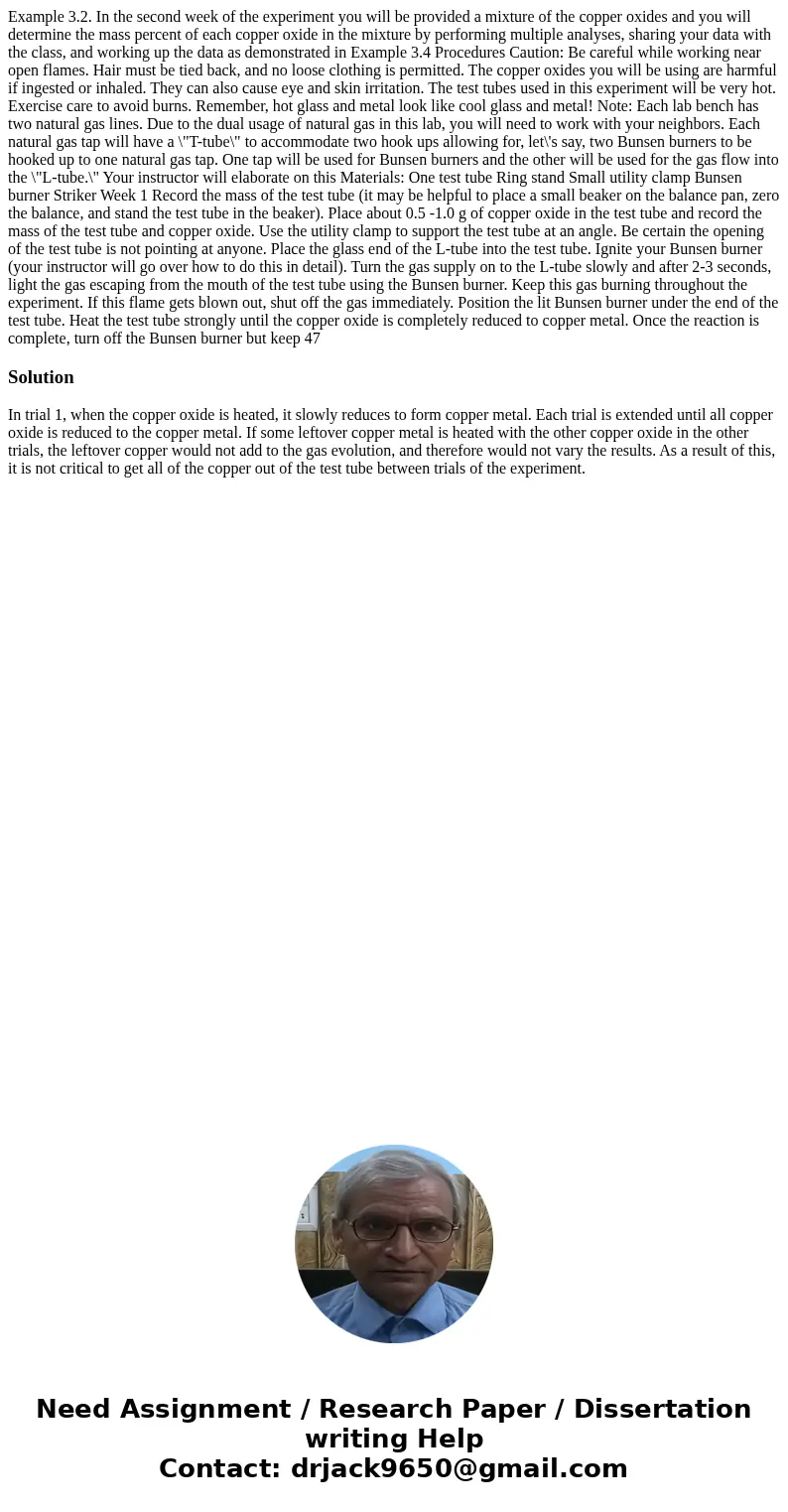Example 32 In the second week of the experiment you will be
Example 3.2. In the second week of the experiment you will be provided a mixture of the copper oxides and you will determine the mass percent of each copper oxide in the mixture by performing multiple analyses, sharing your data with the class, and working up the data as demonstrated in Example 3.4 Procedures Caution: Be careful while working near open flames. Hair must be tied back, and no loose clothing is permitted. The copper oxides you will be using are harmful if ingested or inhaled. They can also cause eye and skin irritation. The test tubes used in this experiment will be very hot. Exercise care to avoid burns. Remember, hot glass and metal look like cool glass and metal! Note: Each lab bench has two natural gas lines. Due to the dual usage of natural gas in this lab, you will need to work with your neighbors. Each natural gas tap will have a \"T-tube\" to accommodate two hook ups allowing for, let\'s say, two Bunsen burners to be hooked up to one natural gas tap. One tap will be used for Bunsen burners and the other will be used for the gas flow into the \"L-tube.\" Your instructor will elaborate on this Materials: One test tube Ring stand Small utility clamp Bunsen burner Striker Week 1 Record the mass of the test tube (it may be helpful to place a small beaker on the balance pan, zero the balance, and stand the test tube in the beaker). Place about 0.5 -1.0 g of copper oxide in the test tube and record the mass of the test tube and copper oxide. Use the utility clamp to support the test tube at an angle. Be certain the opening of the test tube is not pointing at anyone. Place the glass end of the L-tube into the test tube. Ignite your Bunsen burner (your instructor will go over how to do this in detail). Turn the gas supply on to the L-tube slowly and after 2-3 seconds, light the gas escaping from the mouth of the test tube using the Bunsen burner. Keep this gas burning throughout the experiment. If this flame gets blown out, shut off the gas immediately. Position the lit Bunsen burner under the end of the test tube. Heat the test tube strongly until the copper oxide is completely reduced to copper metal. Once the reaction is complete, turn off the Bunsen burner but keep 47 
Solution
In trial 1, when the copper oxide is heated, it slowly reduces to form copper metal. Each trial is extended until all copper oxide is reduced to the copper metal. If some leftover copper metal is heated with the other copper oxide in the other trials, the leftover copper would not add to the gas evolution, and therefore would not vary the results. As a result of this, it is not critical to get all of the copper out of the test tube between trials of the experiment.

 Homework Sourse
Homework Sourse